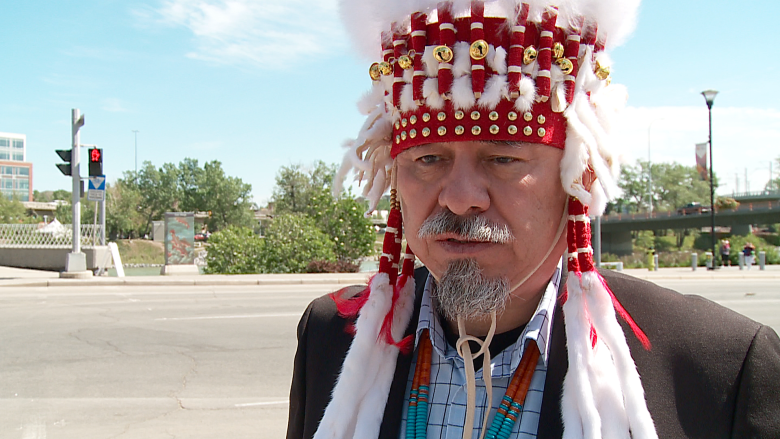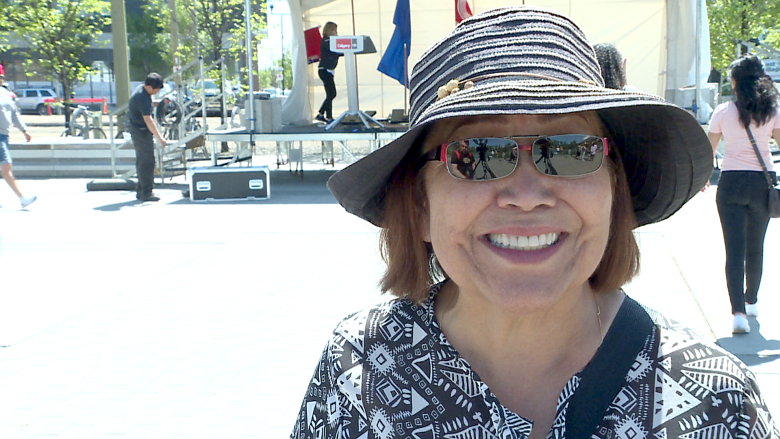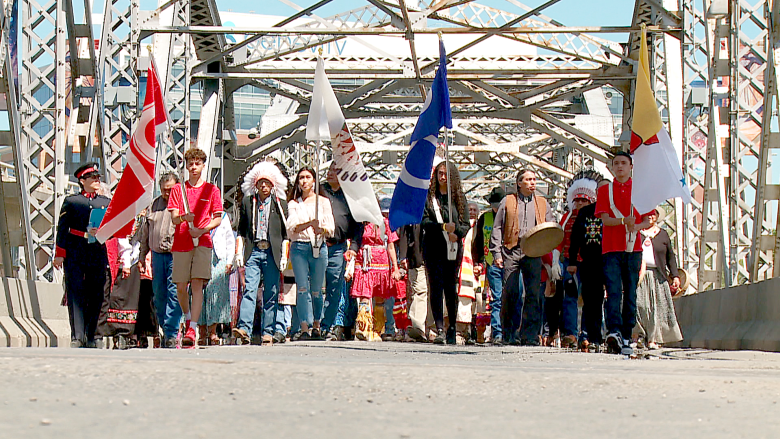Reconciliation Bridge renamed as 'symbol of resilience' for residential school survivors
Songs, drums and the pounding of feet echoed across Calgary's Reconciliation Bridge and the Bow River Saturday, as the city held an official renaming ceremony for the 108-year-old landmark.
The bridge was built in 1910 and originally named for Hector-Louis Langevin, a founder of Canada's confederation and one of the architects of the infamous residential school system. City council voted to change the bridge's name in 2017, and about 150 people gathered in the northeast end of downtown Calgary to see the new sign unveiled.
"This is a complicated day. This bridge is a memorial. It reminds us of mourning, it reminds us of loss, it reminds us of 3,000 little boys and girls that never came home," said Calgary Mayor Naheed Nenshi.
"It's also a symbol of resilience and power and victory and talking about who were are now as a people and what we're trying to build together, so it's been a day long time in the making."
Residential school survivor Violet March said once she heard about the renaming ceremony, she knew she had to attend.
March is from Treaty 6 Cold Lake First Nation. When she and her sister were stolen from her family and taken to a residential school — the church-run, government funded boarded centres in which generations of Indigenous students were assimilated and abused — the two only spoke Denesųłįné, not English, but were punished for speaking their mother tongue.
"We were brought to the residential school at a very young age. I just died. It was culture shock. I wanted to go home. It was endless tears," she said.
She cried again at the renaming ceremony, but for a different reason.
"Tears are tears of healing. That's ok. Just continue," March said.
Piikani First Nation Chief Stanley Grier said the renaming was an important opportunity to acknowledge those subjected to the myriad atrocities of the residential school system.
"Both my parents went to residential school. They were punished for speaking their own language, and refrained from practising their own culture, traditions," he said.
"Those generations that suffered at the hands of the system in residential school has created a very sombre atmosphere. On the other side the word reconciliation is about bringing about past differences and trying to bring about some growth and understanding."
City of Calgary officials and Indigenous leaders and traditional knowledge keepers emphasized that the renaming is just a small step in the journey that is reconciliation.
Nenshi said the next steps for the City include looking at implementing the White Goose Flying Report — a local framework created in response to the Truth and Reconciliation Commission — and working to improve prosperity, engagement and social integration in local communities.
"This is a test," Nenshi said, and an opportunity to ask, "what do nation-to-nation relationships really mean?"
"It's not about rewriting history, it's about learning what we can from history so we can co-create a better story going forward," said Const. Cindy Provost, Indigenous strategic engagement officer for the Calgary police. "It's a reminder to every individual that takes a walk across."
As for March, she wanted to take one more opportunity to cross the bridge after the ceremony and reflect on what the new name meant not only for her, but for her children, grandchildren and great-grandchildren.
She made a tobacco offering into the waters, before heading home, with a smile on her face.
- MORE ALBERTA NEWS | Canmore sees spike in reported cases of spousal abuse
- MORE ALBERTA NEWS | Calgary teachers learn how to bring code into their classrooms





